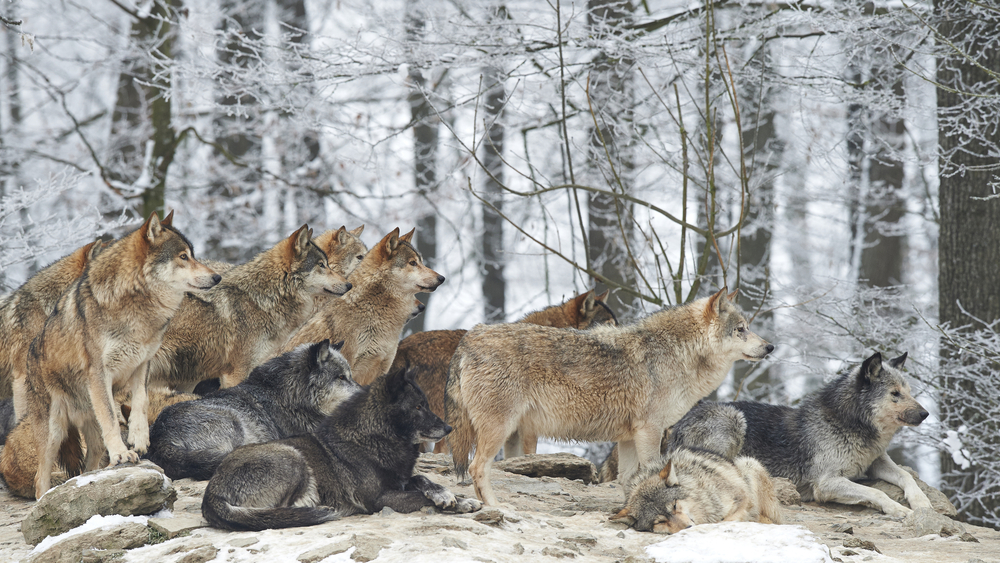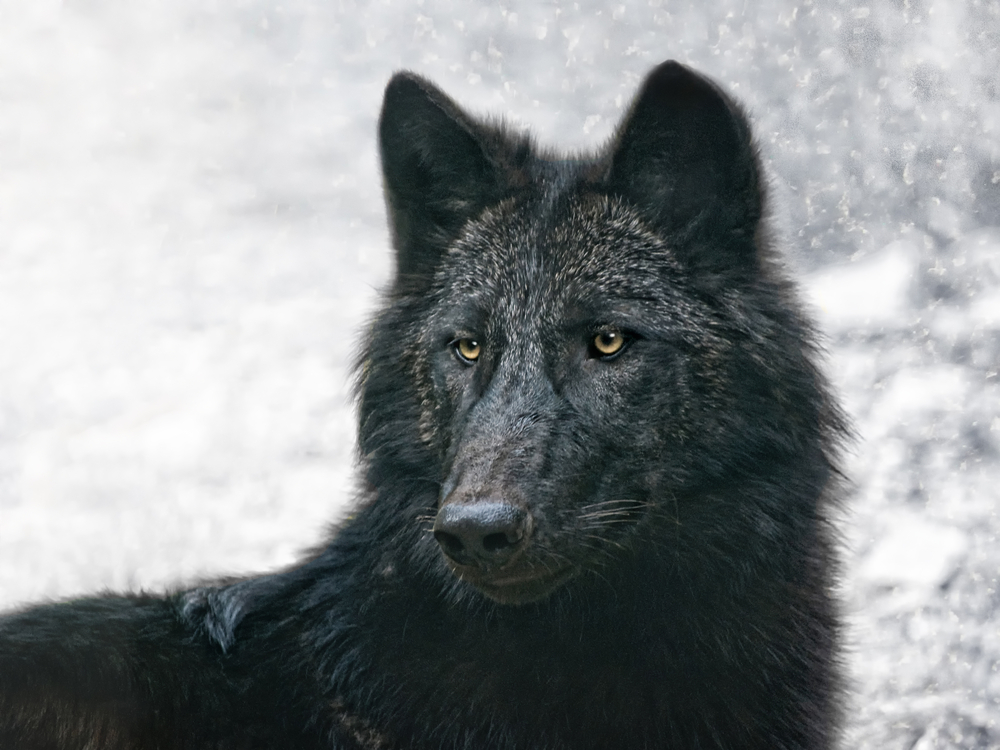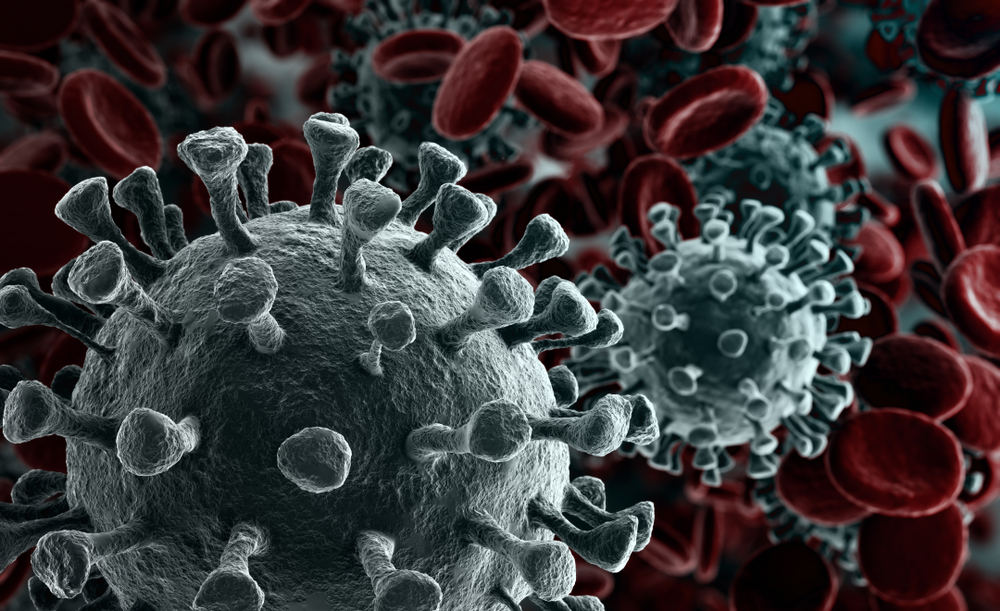Table of Contents (click to expand)
Black fur isn’t normal, but the fur of wolves in certain areas of North America is turning black. Scientists found that a virus was driving this change in fur color… but how?
Wolves are magnificent animals, and different species of wolves and canines are found all around the globe. Something consistent about them is that they all live in packs. The pack greatly influences the lives of these animals in terms of how they behave and survive, but could another living creature affect the pack life and its evolution?
Scientists from Oxford University, Yellowstone National Park and Penn State University looked into an odd occurrence among grey wolves in North America. They found that in certain regions, wolves are more likely to have black coats. Now, before we jump into how they found this out and what discoveries they made, let’s cover a few basics about wolves.

Wolves And Their Relatives
Wolves belong to the Canidae family, and are classified into 38 subspecies. Each subspecies is quite different from its relatives. These differences arise from the different conditions and places in which they live. Dogs were actually domesticated from wolves, which you can read about here. So why is that important?
Well, dogs had a huge role to play in the study. At some point during their domestication, dogs interbred with wolves, and some genes from wolves were passed onto dogs, and in the same way, some genes from dogs came into wolves. The gene that makes a wolf’s fur black was one of those.
However, why is this gene being passed on and why is it more important than others? Because this gene protects the wolves from a deadly disease.
Also Read: How Did We Domesticate Dogs?
Canine distemper virus
Canine distemper virus (CDV for short) is a deadly virus that can infect any canine species, as well as other animals like raccoons or even lions. CDV affects an animal’s lungs, nervous system and digestive system. To make matters worse, it also curbs the body’s ability to fight back by harming the immune system.
While we may have a vaccine to prevent CDV from harming our pets, it still proves troublesome in the wild. CDV is a hard-hitting disease and has been responsible for mass mortality events in Caspian seals. Any tool to fight against this disease would be very useful.
For that reason, knowing the responsible gene would be useful, but how did scientists figure this out?
When genes are passed down from one generation to the next, more often than not they are specifically selected by nature. Natural selection ensures that weaker genes in an environment fade away. It also works so that stronger genes are carried into newer generations.
The gene CBD103 in the wolf’s genetic code is what controls the color of their coat. The regular color of a wolf’s coat in those regions is grey. The mutated gene from the dog’s gene pool makes their fur black. However, scientists also noticed that dogs with black fur tended to be immune to CDV more often. This led them to believe that this gene controlled both the color of a wolf’s fur and its ability to fight CDV.

Also Read: Why Do People Have Different Skin Colors?
Changing The Wolf
We took a look at the gene that helped the wolf combat CDV, but how did the gene change the wolf? Other than the obvious change in the color of the fur coat, it actually changed how packs of wolves behave.
These scientists noticed that wolves with black fur were more common in places where CDV outbreaks had happened. They used certain predictions and found that wolves were more likely to choose a black-furred partner in places with CDV, rather than in places where CDV was not as common.
In simple terms, if a place had outbreaks of CDV, a black-furred wolf was more likely to be chosen as a mate than it would be in a place where there were no outbreaks of CDV. This means that the gene was not just naturally selected, where the weaker gene doesn’t pass on because of the death of the animal. The wolves made an effort to choose black-furred partners to help protect them from the deadly disease.
It’s quite unusual to see such deliberate effort being actively directed towards choosing a black-furred partner, but wolves are incredibly intelligent creatures!
Conclusion
The crazy things that happen in nature will never cease to surprise us. Understanding these black wolves and what makes them change their behavior is a great example of this. It has shown how something as small as a virus can influence large animals to change how they behave. We also see how changes in their behavior have made certain populations change their appearance in dramatic ways.

This makes one wonder about what else has been influenced by things such as this. Certain big changes, like climate change, have caused whales to become filter feeders (read this article), but there may have been countless other things, like an easily overlooked virus, that have changed the animal kingdom in myriad unknown ways.
How well do you understand the article above!

References (click to expand)
- Cubaynes, S., Brandell, E. E., Stahler, D. R., Smith, D. W., Almberg, E. S., Schindler, S., … Coulson, T. (2022, October 21). Disease outbreaks select for mate choice and coat color in wolves. Science. American Association for the Advancement of Science (AAAS).
- Mammal Species of the World - Browse: lupus. departments.bucknell.edu
- Beineke, A., Baumgärtner, W., & Wohlsein, P. (2015, December). Cross-species transmission of canine distemper virus—an update. One Health. Elsevier BV.
- Wilson, S. C., Eybatov, T. M., Amano, M., Jepson, P. D., & Goodman, S. J. (2014, July 2). The Role of Canine Distemper Virus and Persistent Organic Pollutants in Mortality Patterns of Caspian Seals (Pusa caspica). (M. E. Grigg, Ed.), PLoS ONE. Public Library of Science (PLoS).
